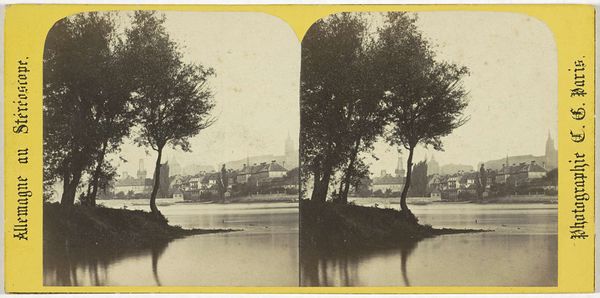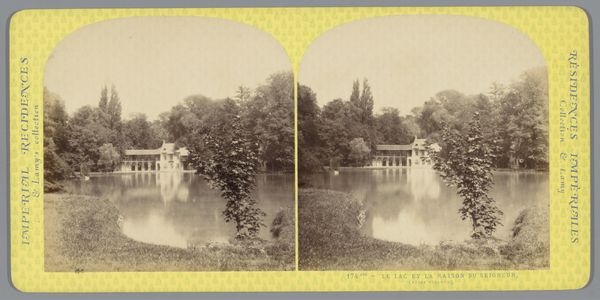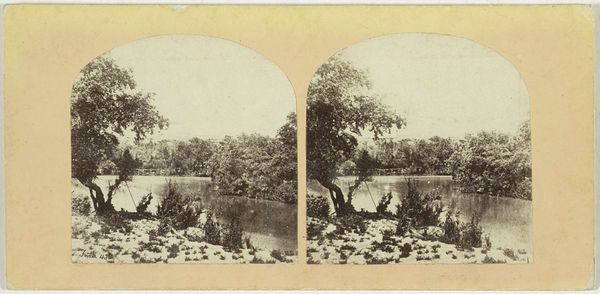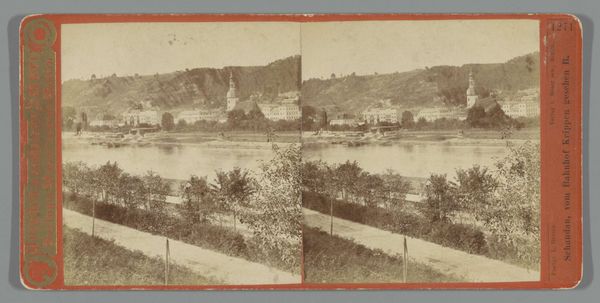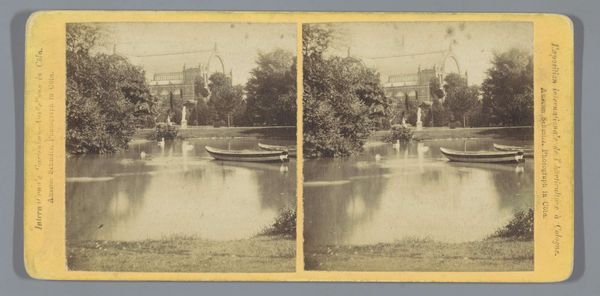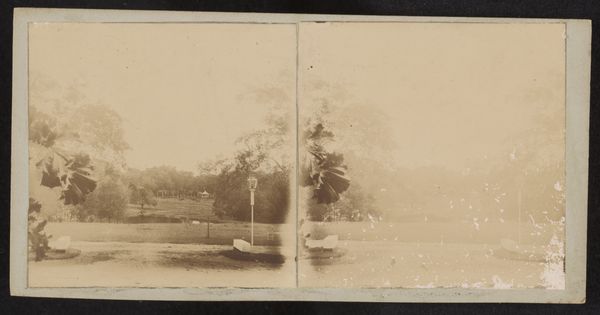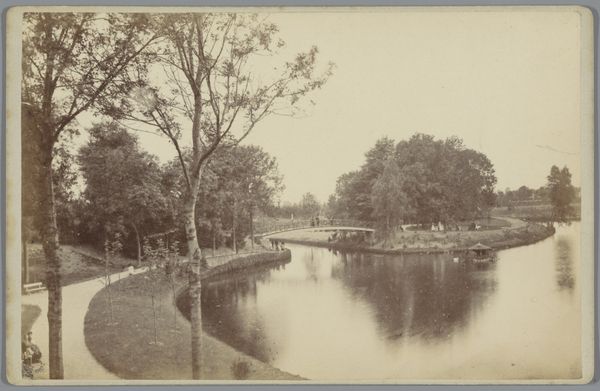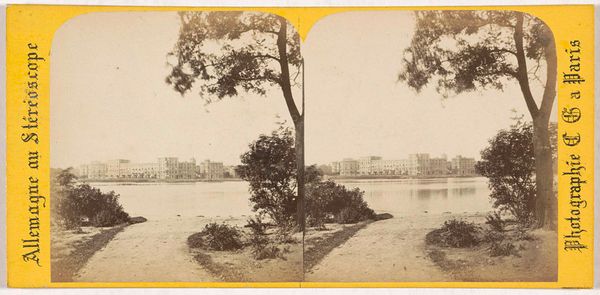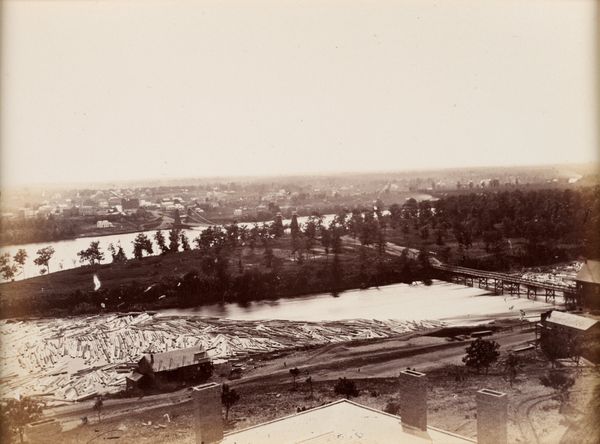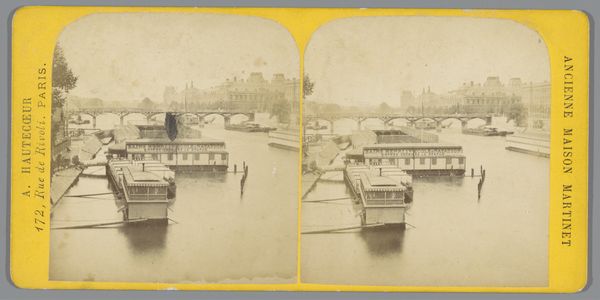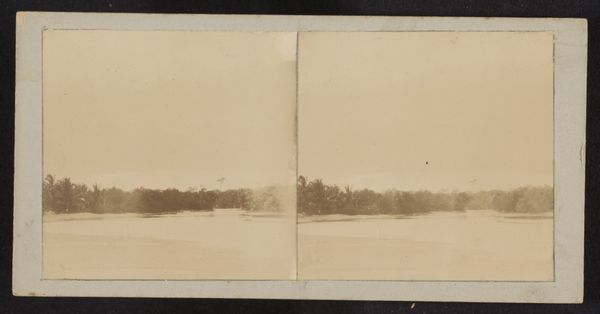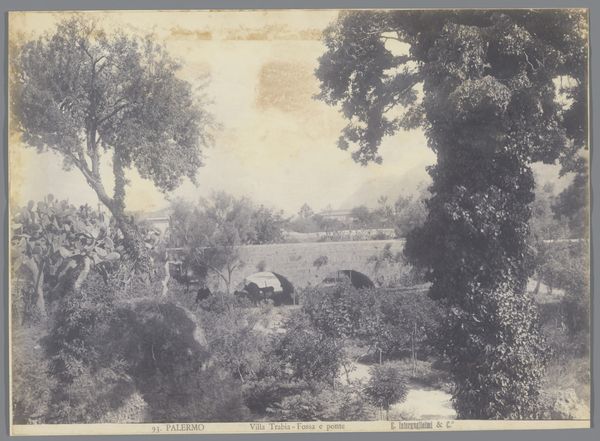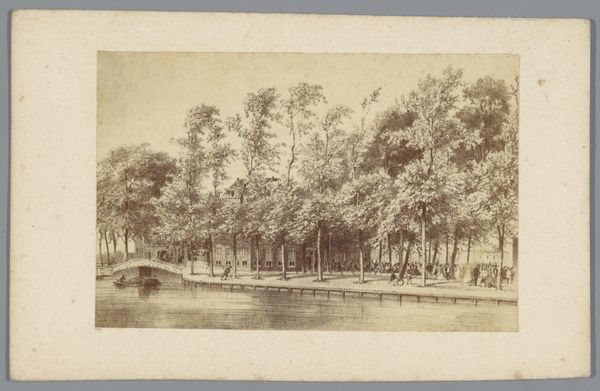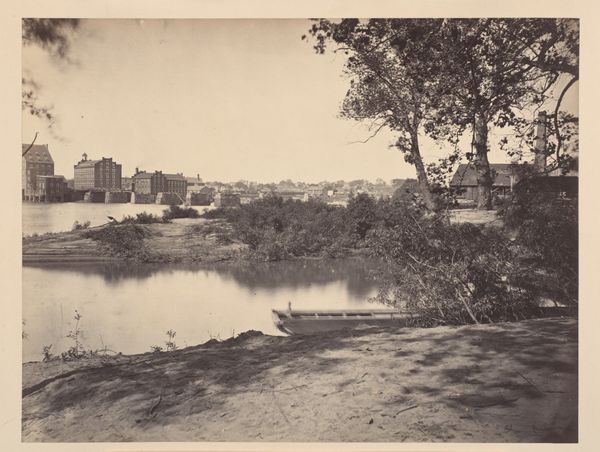
Dimensions: 3 x 5 3/8 in. (7.62 x 13.65 cm) (image)3 7/16 x 6 7/16 in. (8.73 x 16.35 cm) (mount)
Copyright: Public Domain
This stereograph, published by Jeremiah Gurney & Son in New York, is made through photography, a fascinating craft in itself. Two nearly identical images are printed side-by-side on a card. When viewed through a stereoscope, the brain combines them to create a single, three-dimensional image. Photography in the 19th century involved a complex dance of chemistry and optics. Glass plates were coated with light-sensitive emulsions, exposed in a camera, and then developed using various chemical solutions. The resulting image, often a sepia tone like here, captures a specific moment in time. The mass production of stereographs coincided with the rise of industrial capitalism, creating an appetite for easily-reproducible imagery. As a commercial photographer, Gurney was part of this economy, documenting portraits and landscapes for a growing middle class. These images were more than just documentation; they were a form of entertainment and education, allowing people to experience faraway places and social events from the comfort of their homes. This stereo card invites us to consider photography not just as art, but as a material product deeply embedded in its time.
Comments
No comments
Be the first to comment and join the conversation on the ultimate creative platform.
